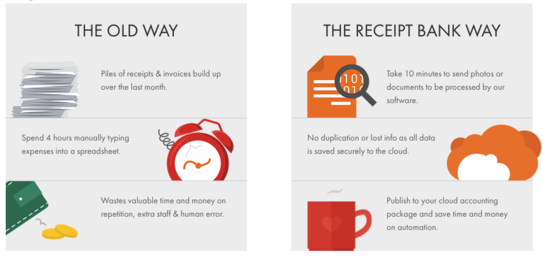E-Commerce: Why you should integrate into your ERP
According to Statista, we’re projected to hit $2,842 billion (USD) in worldwide e-commerce revenue in 2018 alone (with that number almost doubling to $4,878 billion by 2021). Is your business ready for this unprecedented demand? Having your e-commerce platform integrated into your ERP system is commonly overlooked due to the perceived disruption a change like this can cause to the business. Unfortunately not having these critical sales channels tightly integrated into the rest of your operations will be detrimental.
Connecting your e-commerce platforms into your ERP system not only pays dividends in the form of customer experience, but also allows you to take a holistic approach to your distribution and fulfilment functions. Not only will integrating eliminate double data entry of sales from your e-commerce channels to your ERP, but it will also provide your e-commerce channels with up to the minute stock levels for each of your products. Having up-to-date inventory information available to your e-commerce channels avoids overselling of products and in turn makes happier customers. Just as having extensive per-channel sales data allows you the ability to plan for demand not only for purchasing, but also for managing your stock across your warehouses and 3PL providers.

The benefits of integrating your e-commerce platforms with your ERP are not exclusively limited to transacting sales and inventory data. Another key function people commonly overlook is shipping. Staff can make mistakes entering address information from one system to another leading to an unhappy customer. Completing this integration will allow you to enable live shipping rates to your customers, and your staff will be able to generate a shipping label at the picking stage with no additional work. Further to this, your e-commerce store can be setup to receive tracking information. This affords you a great opportunity to engage with your customers, sending out personalised emails updating them with their shipment details at scale.
Have you considered your process for releasing new products across all of your sales channels? If you’re an omni-channel retailer, it can become quite an arduous process to ensure your products and their associated pricing information all match across different systems. Centralising your products and pricing to your ERP will allow you to automate this release process allowing you to enter in the new product information, images and pricing tiers once. Your ERP will then update all of your different sales channels with these new products.
Leaving your sales channels to operate independently is a very unscalable practice, and with e-commerce sales rapidly growing your business may not be able to keep up. At ALTSHIFT, we specialise in working with omni-channel retailers to consolidate their business systems into a single translatable process across channels. If you’re not sure where to start when embarking on an integration project, get in touch with us to talk about your needs.
Improving warehouse efficiency
As more and more businesses move into omni-channel distribution, the efficiency of ones inventory operation becomes relevant. But one may ask, when is a warehouse considered to be at capacity? The answer to this may vary, but typically a warehouse is at peak efficiency where space utilisation is at 80 - 85%. Breaching this threshold will see diminishing efficiency from a movement and space perspective. Pallet movement is restricted making each replenishment take more steps to complete, temporary storage of pallets on the floor will also inhibit efficiency. More steps to complete a move results in increased costs and slower processing, a business in this position will also have to expand to more locations quicker.
One of the first things to look at when assessing warehouse efficiency is by looking at each product on the shelves. In order to understand your specific situation, you need to assess the sell-through rate of each SKU sitting in inventory. This is the rate at which you sell through your entire inventory of a given SKU within a defined time period. Using this information, make an assessment on which products you may be overstocked on. With this in mind, here are some tips to make most efficient use of your warehouse.

Quantify the storage profile of your warehouse in terms of capacity and utilisation, look up and ensure you’re making best use of your vertical space. How many cubic meters of overhead space are not used? When discussing vertical space, make sure any changes you plan to make do not conflict with the fire safety installation of the building. While you’re on the subject of vertical space, identify functions where stacking heights are lower. It isn’t uncommon to observe empty upper rack space in areas of a warehouse where packing and dispatch take place. Another aspect of shelving that is often overlooked is depth, switch to double-depth racking to further increase efficiency.
If you are holding the same SKU across different bins or locations, try to consolidate these to increase space utilisation. Matching the size and sales of your different SKUs to an appropriate sized pick slot will also maximise the efficiency of your picking slots. If you find you’re overstocked on a couple of products, consider storing this inventory off-site to free up rack space for products with a high sell-through rate. Where possible, introducing drop-shipping for these products will further decrease your in-house inventory costs.

Another factor to consider is the width of your aisles, you don’t want these to be too wide as this will lower your overall space utilisation. By the same token you don’t want your aisles to be too narrow to the point where they inhibit picking equipment from operating effectively. Try to keep your inventory of packing materials relatively lean to retain space for other products. A good way to do this is by taking with your packaging supplier, aim to have them hold some inventory for you and simply take delivery every few days.
Managing the efficiency of your warehouse is made far simpler with specialist warehouse management software. At ALTSHIFT, we have worked with businesses of all shapes and sizes to introduce solutions to improve operations. Thinking of overhauling your inventory operation? Get in touch with us.
What does an ERP implementer do?
When it comes to business software, the options are truly endless. Software to serve a particular purpose can come in all shapes and sizes requiring business owners to make snap judgements on which to purchase. Fortunately a cloud implementer can make this process easier. Cloud implementers are vertical experts that comprehensively understand the wider app ecosystem, and how these business apps can interface with one another. A good cloud implementer has an understanding of the issues you may be facing specific to your business or industry, and how to solve them. These issues you could be facing include:
Process inefficiencies
Manual data entry between systems
Concerns about business scalability
Lacking visibility into core business functions
Low customer service levels
Legal compliance
Vendor/Customer compliance
Unfortunately simply swiping your credit card and purchasing a software package will not exclusively solve these issues, in fact this step is only the beginning. In order to leverage the power of business systems to solve these issues, your business has to undergo a vast transformation to ensure your people and processes are ready for the new system. A good cloud implementer will take the reins of the software implementation, managing it like a project.

This process begins with a consultation, once you start engaging with a cloud implementer they will begin a comprehensive evaluation of the business. This consultation phase looks at what systems and processes are currently in place at your business, in order to get a snapshot of the current situation. They should also during this stage be collecting key metrics about your business, in order to understand how future changes impact the business. They will look to understand how your systems/functions currently talk to each other and start piecing together how any integrations should be set up if applicable. With all of the information collected about your business’s situation, the cloud implementer will begin to recommend a solution. The implementation firm will be able to leverage relationships with the different software vendors to negotiate a contract on your behalf. Once licenses for the software have been acquired, the implementer will begin with the project.

The process of implementing a new system is unique for each business, but generally consists of data entry, configuration and testing. A bulk of that time will be spent cleaning up your pre-existing database, or building a new one from scratch. The exact time this process takes depends on how many customers and vendors you do business with, the number of products (and variants) you stock and any associated production processes that need to be implemented. Once a database has been established in the new system and it has been configured, tests will be conducted on all of the workflows and processes. This testing is performed by inserting false transactions, and could involve multiple systems within your organisation. When testing is complete, the most important component of the implementation begins; change management of the business. Working towards a predefined go-live date, your consultants will begin training all staff on how to operate the new system.
At ALTSHIFT, we have successfully executed many ERP implementation projects with businesses in all kinds of industries. This multifaceted expertise helps us to understand your business goals, and to set in place the platform to allow you to exceed those goals. If your business is thinking of change, get in touch with us for a free consultation.
Maintaining lean inventory for distributors
In today’s economic climate, businesses are on a constant rolling diet. Owners and inventory controllers strive to pilot the leanest possible operation with next to no liabilities. Particularly in the Distribution scene, these companies are being run on extremely lean inventories - thus reducing the amount of capital tied up in inventory. Other companies will stock up in order to always have what the customer ordered.
There are pros and cons to both of these strategies, when a company chooses not to stock up they run the risk of losing an opportunity once a customer comes calling. By the same token, the distributor who stocks up on an item finds themselves in strife once they realise they’re not able to move the product quickly. The vital metric to any distribution business is sell-through rate. This metric is the number of times inventory of a product is bought and entirely sold in a given period. The more times a distributor can turn over it’s inventory in a year, the more money they will make. You can maximise your stock turns by avoiding stocking items that you cannot turn within 90 days.

The amount of inventory that you initially purchase is going to depend on where your customers are located and the quantity that they can reasonably demand. If your customers are in close proximity to your warehouse, then you can simply ask them how much product they plan to procure over a given period. On the other side of the coin, if your warehouse is servicing a far larger area of customers then you’ll need to have a buffer for any unexpected spikes in demand. Having good relationships with local suppliers comes in handy here as they can help you fill this demand within a reasonable timeframe.
One of the biggest errors a company can make is investing in too much inventory. If you aren’t able to move this product quickly, the inventory will be taking capital and shelf space inevitably costing the business cash-flow. The space taken by the slow-turning inventory could be better used stocking product that plays to what your customers want to buy. This comes back to the sell-through metric mentioned earlier, this metric is key to the success of any distribution business. The trick underneath it all is to hold just enough product to not run out of stock. Achieving this balance is key to your success as a distribution business.

Another factor to consider when deciding how much stock to purchase is the product life-cycle. Products like food and beverages are high-risk items which have a finite shelf-life, whereas gardening tools are relatively low-risk and can be kept on hand. Another trick of the trade is to sell your stock before you’ve even paid for it leveraging payment terms. If you only have to pay for the stock 30 days after it is sent, you could sell the stock and have the cash in hand before you settle the bill with the manufacturer. This way you’re essentially acting as a middle-layer, never “owning” the stock, but clipping the ticket along the way.
When it comes to managing lean inventory, this task is impossible to do at scale without a high level of visibility into your purchasing, sales and inventory operations. The implementation of a specialised ERP platform will give you the power to monitor your sell-through rates and other metrics to enable you to make smarter purchasing decisions. If your current system isn’t quite up to scratch, Alt Shift can manage your ERP project from scoping to implementation and training. We can provide you the tools you need to take your business to the next level. Get in touch with us to book in a chat.
Why mobile should not be overlooked in B2B
Imagine the ability to quickly bring up a catalogue of your products in front of a customer, know how much stock you have; and be able to place an order in seconds without a Wi-Fi connection. Unfortunately many businesses leave revenue on the table by failing to implement this level of visibility into their sales process.
According to Statista, there will be almost 5 billion mobile phone users globally by the year 2020. Of those 5 billion users, nearly 85% will be using smartphones. With the rate people are adopting mobile phones and the internet, smartphones are in good stead to entirely transform the face of commerce. Here are 5 reasons why mobile should definitely not be overlooked in B2B:

1. Most B2B business happens over the phone already. The reality here is that most B2B transactions that occur are taken over a phone call or via chat apps. Channelling this into a purpose built B2B module is simply but a natural evolution in the way we do business.
2. Mobile phones are very handy. Only on your mobile can you shop, read the news and listen to music at the same time. As mobile technology has advanced in great strides, we now have the ability to multi-task to our hearts content.
3. Space constraints. In the wholesale/distribution business, the most scarce resource is space. A mobile phone is far easier to pocket than a full workstation.
4. Always on. In the B2B world the wheels of commerce continue to turn 24 hours a day, 7 days a week. We all know that our smartphones are slowly blurring the lines between work hours and our home lives.
5. Repeat business is what fuels the world of B2B. For somebody who needs to buy goods from you on a regular basis, a B2B app is an absolute god send.

At ALTSHIFT, we work with wholesalers and distributors and have provided B2B solutions of all shapes and sizes. Have you got something in mind for your business? Get in touch with us!
Calculating the cost of a new ERP system
You may have an ERP system in place at your business such as MS Dynamics, Sage, Pronto, Netsuite, Accredo or one of the many other incumbent solutions. The reality is that this ERP system may not be serving your business as well as it did when it was first implemented. This poses two courses of action:
Continue to maintain your existing ERP system
Implement a modern ERP system and reap the benefits
Granted that committing to a new ERP system can be costly, but how costly exactly? There are plenty of factors involved in implementing a new ERP system from outright hardware purchases to installation of specific software modules. Most ERP pricing models only look at the initial capital outlay for hardware, software and implementation, but fail to account for the ongoing costs relating to running an ERP system.

As no two businesses are the same, the cost of an ERP system is variable dependent on factors such as the number of staff that you have, the scope of the project, whether customisations are required or even the deployment itself. Plenty of software vendors will allow you to buy specific modules on their platform allowing you to just purchase the core ERP module and saving on cost, however one important factor to note is expandability. Check in with your vendor to understand the costs involved with expanding your ERP system as your business needs change. Ideally you would implement the ERP system within the bounds of the out-of-box application, however unique business processes necessitate customisation which can very quickly drive up the cost of your implementation. Customisations need to be added to the ERP in such a way that the software can still be updated without breaking, otherwise each time the ERP software is updated additional coding must be done to ensure it is compatible.
Here is a list of costs you may face relating to the implementation of a new ERP system:
Hardware and related operating systems:
ERP system licensing (SaaS model or up-front)
Process planning, development and documentation
Staff training
Implementation consultation fees

Now that we have an idea what it would cost to implement a new ERP system, here are some direct benefits:
Leaner inventory, less capital tied up in stock
Increased productivity through workflow enhancements
Reduced wastage/spoilage
Less last minute changes causing wage overtime or air-freight
Increased revenue due to better customer service
Decreased time-to-market for new products, increased margins
There are also some indirect benefits that are a little harder to quantify, but still very relevant:
Increased employee retention and productivity through lower day-to-day frustrations
Better information leading to smarter in-market moves (pricing, specials etc.)
There are many different angles to look at when considering the cost of implementing a new ERP system and creating a ROI statement. Just be sure to go through the process, documenting everything as you go along to ensure that all stakeholders have visibility and can clearly understand what the project will achieve. In engaging with an ERP project consultant, such as Alt Shift, they will simplify this entire process for you. If you would like to understand how implementing a new ERP will benefit your business, get in touch with us.
How to select an ERP System
Nothing will impact a businesses ability to maintain long-term growth like the implementation of an effective ERP system. However when it comes to selecting and implementing an ERP system, if you get it wrong you’ll pay the price. Replacing an ERP system is akin to performing brain surgery while the patient is awake and solving a Sudoku. Not only are you severely overhauling every process in place within your business, but you are also attempting to continue trading like normal.
Fortunately it is possible to make this transition successfully, and in fact many companies do manage to implement an ERP system with minimal business disruption. The difference between those companies that do and do not achieve this is the careful planning, management and execution of an ERP project. The implementation of an ERP system should be treated and managed as such to ensure that the scope is understood, and that any risks of disruption are minimised. This rule applies to all, whether you’re a mom and pop shop or a gargantuan multinational.

The first step to take before embarking on the implementation of an ERP system is to clearly define the rationale behind this decision. Things you should be considering will relate to your current system and whether it can foster your business needs now/in the future. Another aspect that should be analysed are the processes within your current system and whether they support your staff. Having to perform workarounds or data entry across different spreadsheets and systems would be an example of an unscalable process that will ultimately cost your business in lost productivity. An inability to respond to your customers with accurate information in a timely manner will result in lost opportunity, and therefore lost revenue. There may be any number of factors pertaining to your unique situation that should be considered to give yourself the ROI of implementing a new ERP system.
Once you have identified the approximate ROI of implementing a new ERP system, you should then take note of some benchmarks to allow you to measure the outcome. Information you could collect about your current situation may include (but not limited to):
Inventory Accuracy %: Inventory Count in System vs. Real Inventory Count
Inventory Sell-Through Rate
Production Lead Time (if applicable)
Quote-to-Order Conversion %
Average Order Fulfilment Time
Average Lifetime Customer Value
This information will be very valuable to you in measuring the impact of your new ERP system and will allow you to set goals of where you need to be.

Once you’ve got your measurable outcomes documented down, the next key step of the process is to achieve buy-in from your staff. This is important as the end users of your current system will have the low-level insight into your business processes in practice that high-level management may not see. With this information you can start forming categories of functionalities; typically these are your mission critical functions, important functions and nice to have but not essential functions. It is a good idea to go into this exercise visualising your measured KPIs and goals to figure out what is most important for your organisation.
Given that most ERP systems will handle core business processes well, the key to selection lies at the fringes - these are the functions specific to your industry or business. At this stage you should begin engaging with software vendors with your unique business requirements. Keep in mind when engaging with vendors that you’re not looking for the product with the most impressive features, you’re looking for an ERP system that provides a solution to your requirements. Working with an ERP project specialist like Alt Shift simplifies this initial phase to one single point of communication with an unbiased view on the different ERP systems available. Your ERP consultant will work with you to provide an assessment and make a recommendation on a solution. Leveraging our relationships with the different software vendors, we will be able to negotiate a contract on your behalf to ensure you get the solution best fit for your business for the best price.
Replacing your ERP System
Your ERP system is ingrained in everything your business does, understandably the notion of replacing your ERP may send shivers down your spine. Yet if the very lifeblood of your business is affecting your agility in responding to market/competitor trends, then quickly the idea becomes a necessity. Since the implementation of a new ERP system is a massive commitment of time and resources, how can you gauge whether a replacement is required?

The first and most important question to ask yourself about your existing system is this: Does my current system support the needs of the business? Aspects you could look at to answer this question include the system’s ability to cater to the bread and butter of your business, the system’s responsiveness and your staff’s ability to leverage the system’s capabilities. Another important factor to consider is whether your current system gives a path for growth into new and innovative technologies (IoT, Business Intelligence, collaboration etc).
If you are heavily reliant on spreadsheets and workarounds in your current system, you leave a lot of headway for your competitors to out-pace you on price, lead-time and customer service. If your current system is unable to foster the growth and change your business needs to keep up, the ultimate cost is lost opportunities which therefore leaves revenue on the table.

The cloud based ERPs of today are impressively flexible and user friendly. They also offer a platform that allows your business to easily adapt and scale as needs evolve over time. The net result of a properly implemented ERP solution will aide you with achieving these objectives:
Increased customer satisfaction
Improved cash-flow and decreased outstanding receivables
Increased opportunities
Decreased costs through efficiencies
Improved sell-through rate (inventory turnover), less capital tied up in inventory
If you are coming to the conclusion that your business may need a heart transplant, get your best people together internally and start identifying the key areas where change needs to happen. After you have properly identified where your trouble lies, you need to determine the correct time to implement. Many ERP projects fall over as the business was not ready for change. However when executed properly, the implementation of a new ERP will take your business to the next level. Alt Shift is an ERP project consulting firm with many successful ERP implementations from all sorts of industries under our belt. Have a chat with us to discuss your business requirements.
Why move your business to the Cloud?
Cloud computing is quickly becoming one of the biggest and most revolutionary technological movements in business. “Cloud” is a catch-all term that encapsulates everything from storing files on a commercial service like iCloud or Dropbox, right down to remotely hosting and maintaining the entire internal infrastructure of a Fortune 500 company. At its most basic definition, cloud computing is the outsourced rental of storage or processing resources, as opposed to hosting/managing your own hardware.
Business systems such as ERP or CRM software that are hosted in the cloud tend to follow the SaaS model (Software as a Service). SaaS based licensing tends to take the form of monthly or annual payments, as opposed to the initial outlay of capital that typically is required for on-premise deployments. There is no server hardware to purchase or updates to operating systems and software, this is managed by the software or hosting vendor and is included in the subscription price. The hosting costs of an on-premise implementation that are often overlooked include backups, disaster recovery, load balancing of processes at peak times and security. The beauty of SaaS systems are the economies of scale, to the end user the delivery is similar but often at a cost saving. As a businesses needs change, the SaaS model offers scalability with the addition of users and modules being a quick and painless affair.

There are two types of cloud deployment to be aware of, single-tenanted and multi-tenanted. A single-tenanted implementation is essentially the same as an on-site implementation except that the hosting is outsourced. This, in essence, is the rental of off-site server hardware where a traditional ERP system would be run. Multi-tenanted SaaS software is one underlying application with businesses each having their own separate and secured database. Multi-tenanted SaaS software benefits from the ability to make updates and changes to the core application, and roll these out to users instantly ensuring users are always up-to-date.

When selecting an ERP system for your business, one thing to be aware of is cloud adaptations of legacy software. What vendors will do is take their legacy incumbent ERP software and port it to be used “in the cloud”. In practice these types of solutions require client side software to access the platform, or even a special server to sit between the software and the user. Using this type of system results in a less than ideal user experience, the speed and responsiveness of this type of software will never compare to that of a true cloud solution. True cloud applications need nothing but a browser on the end-users computer, and can be accessed from anywhere in the world.
Cloud deployments of business systems are an attractive proposition for businesses looking to implement new technology, however with any system decision there are a lot of avenues to be explored. Engaging with an ERP project consulting firm like Alt Shift allows you to leverage our industry experience to find the best possible solution for your business.
Tired of loose receipts and paper invoices?
Going fully paperless is a real possibility with Receipt Bank - the revolutionary tool that makes processing accounts payable and credit card expenses effortless.
Receipt Bank helps to save valuable hours by scanning information from receipts and invoices and publishing them as bills in Xero.
Easily submit all your receipts and invoices by taking a photo via the mobile app,or share your unique Receipt Bank email address with your suppliers and their invoices will flow straight into your Xero account.

TRY RECEIPT BANK FOR FREE
We think Receipt Bank is a 'no brainer' for any business wanting to be more efficient with their bookkeeping, so we're offering to setup Receipt Bank for your business FREE OF CHARGE.
Contact us now for this exclusive free offer.
Once setup with your Xero account we'll schedule a time to quickly run you through the system so you can trial it free for 14 days.
If you want to continue with Receipt Bank after the trial ends we'll simply add it to your monthly bill. Plans start at just $30/month, find out more about Receipt Bank pricing here.
Go forth and automate!
